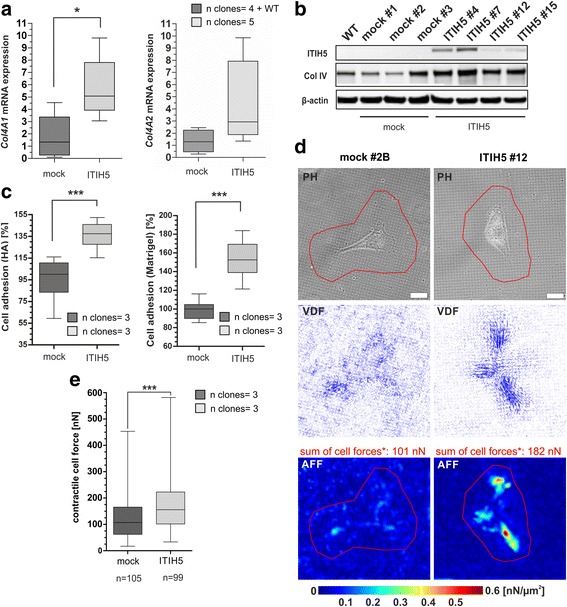Fig. 4.

ITIH5 alters ECM-cell interactions and enhances cell-matrix adhesion and contractile cell force generation. a-b Collagen type IV mRNA and protein (western blot) expression in ITIH5 and mock clones. β-actin served as loading control. *p < 0.05. c Cell-to-matrix adhesion of ITIH5 and mock clones MDA-MB-231 clones on MatrigelTM and HA-substrate. ***p < 0.001. d Cell traction force microscopy assay was used to measure contractile forces that cells exert on elastomeric substrate during cell-matrix adhesion. Representative phase contrast images (PH, upper row) of a mock clone and an ITIH5 clone adhered onto elastomeric substrates (15 kPa stiffness) are shown. Vector deformation field images (VDF, middle row) were retrieved from fluorescent nanobead displacement tracking Scale bar: 20 μm. Corresponding area force fields (AFF: lower row) represent the actual contractile cell force distribution per surface unit (nN/μm2). Red ROIs: Cell outlines were defined to summarize and compare the whole contractile force exerted by one single cell [nN], *: cell forces of illustrated cells. e Box plots analysis illustrate the overall comparison of contractile cell force generation of all measured mock clones (1, 2B and #3), and ITIH5-clones (4, 7 and #12). Box plots: Horizontal lines: grouped medians. Boxes: 25–75% quartiles. Vertical lines: range, peak and minimum; ***p < 0.0001
